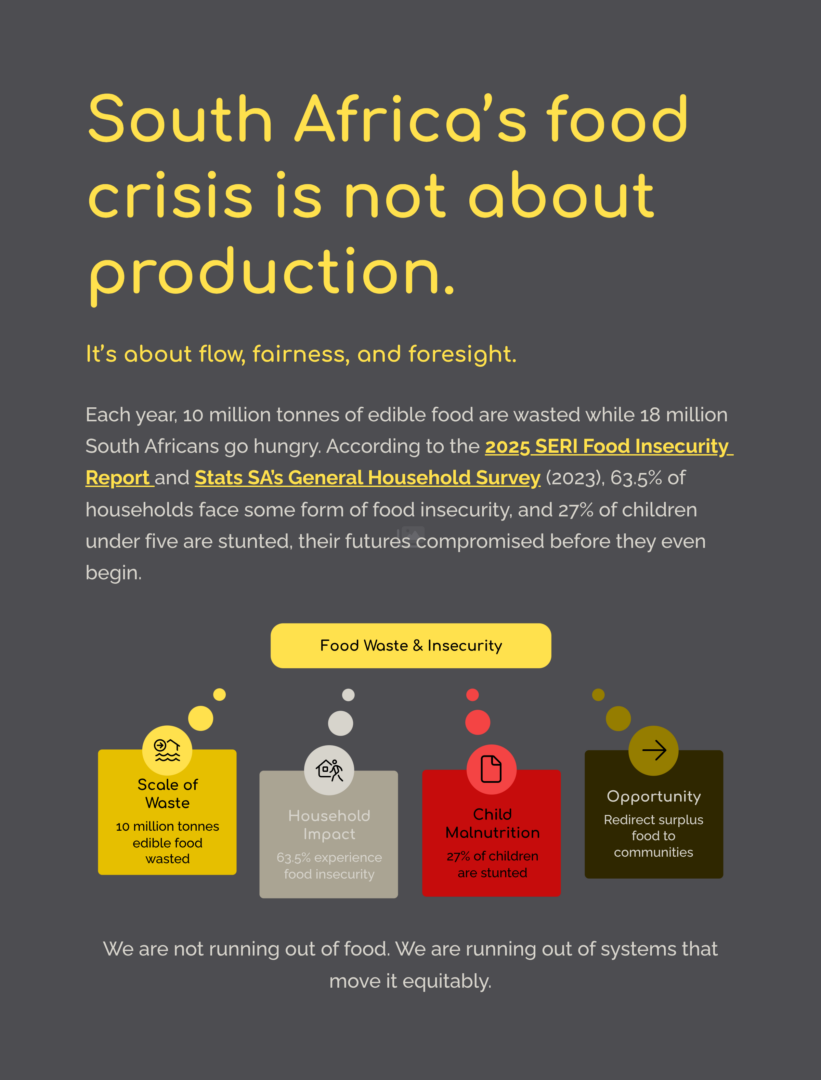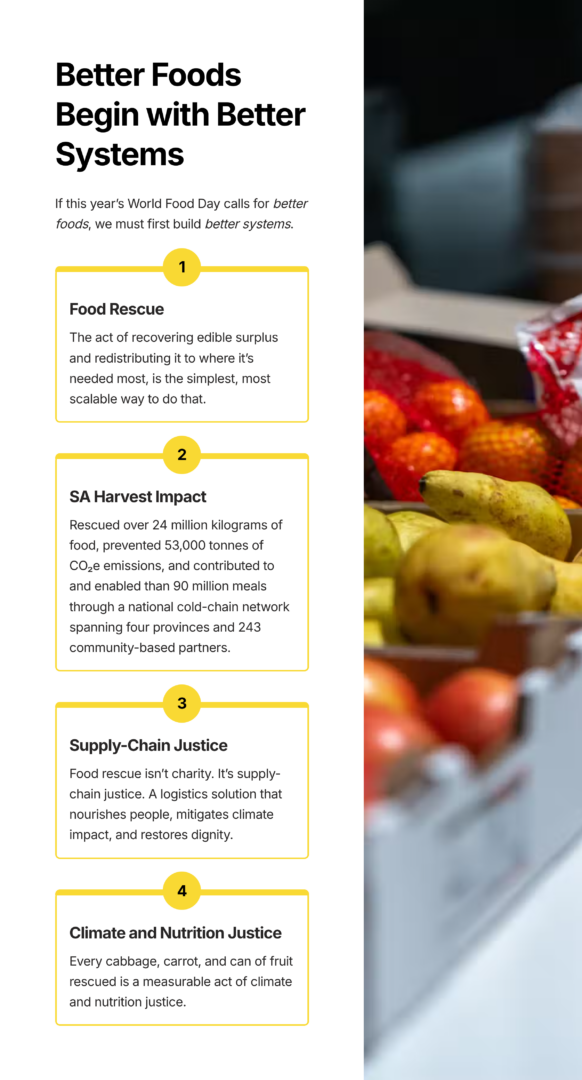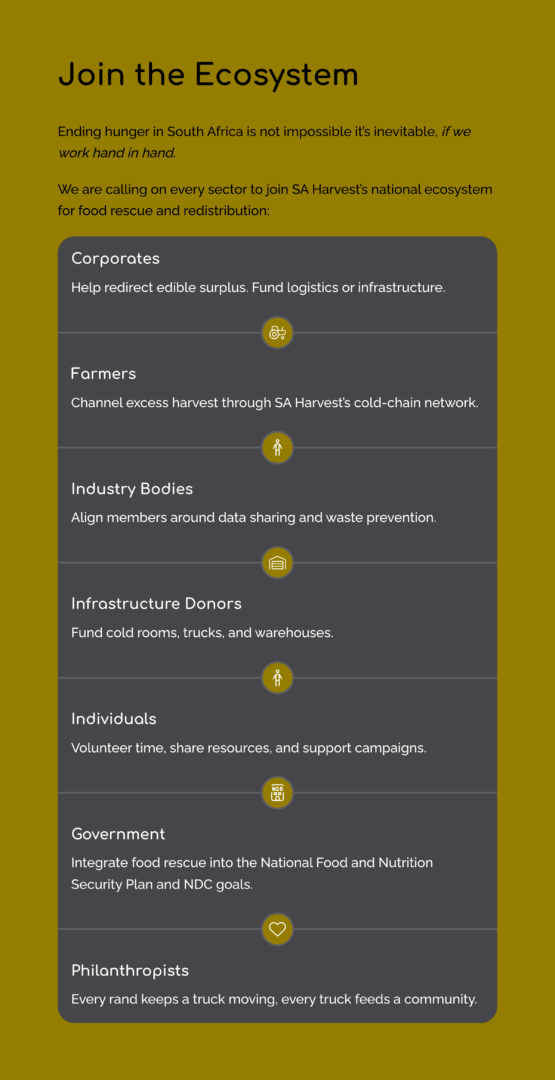
This year’s World Food Day theme “Hand in Hand for Better Foods and a Better Future”, captures exactly what South Africa needs: collaboration across every layer of the food value chain to turn our abundance into access, and our waste into wellbeing.
The Invisible Architecture of Hunger
Hunger in South Africa doesn’t begin in barren soil, but with abundance trapped by inefficiency.
Our food supply chains are highly efficient at profit but deeply inequitable in access. Once food falls outside the commercial system: because of labelling errors, imperfections, or overproduction, there’s no coordinated, safe, or affordable route to redirect it to those who need it most.
The CSIR’s Food Loss and Waste Baseline Report (2022) found that over R70 billion worth of edible food is discarded annually. Meanwhile, food inflation has outpaced wage growth, making nutritious food unattainable for millions.
The SERI report calls this crisis structural and gendered. Hunger hits women hardest, many skip meals to feed their children, carry the burden of care, and endure the psychological strain of empty cupboards. Food insecurity is not just physical deprivation; it is emotional exhaustion, toxic stress, and the erosion of dignity.

Super C Solution
Cold Chains, Climate, and Collective Capacity
Cold-chain infrastructure, or the lack thereof, is one of South Africa’s biggest barriers to “better food.” Perishable, nutrient-dense food spoils before it reaches hungry communities because it’s expensive to transport, store, and distribute safely.
That’s why SA Harvest has doubled its cold-storage capacity, expanded its refrigerated fleet, and piloted greenhouse and dehydration innovations that extend shelf life. These aren’t operational upgrades, they are interventions in food justice and climate adaptation.
The Draft Second Nationally Determined Contribution (2025) identifies food waste reduction as a climate priority, yet no single national mechanism exists to connect surplus to need. Food rescue fills that gap. It is the physical expression of what “hand in hand for a better future” truly means, a system where environmental stewardship and human wellbeing converge.
The conversation about hunger in South Africa often centres on blame… who’s responsible, who’s failed, who’s silent. But blame doesn’t move food. Trucks do.
The challenge is not moral; it’s logistical. We cannot end hunger with outrage alone. We need infrastructure, collaboration, and coordination.
SA Harvest’s model proves that a small number of well-placed interventions like cold storage, fleet capacity, surplus mapping, and data transparency can transform waste into nourishment and despair into dignity.
This is the future of food security: not reactive aid, but proactive systems.
A Call to Action

Food rescue is not charity. It’s justice. By joining SA Harvest’s ecosystem, partners don’t just fill plates; they help rewire South Africa’s food system for dignity and resilience.
Hand in Hand for a Better Future
This World Food Day reminds us that better food means better systems and better systems require better relationships.
When farmers, retailers, government, and civil society work hand in hand, food stops being a commodity and becomes what it should always have been: a right.
The future we’re fighting for isn’t just one where everyone eats. It’s one where everyone belongs.